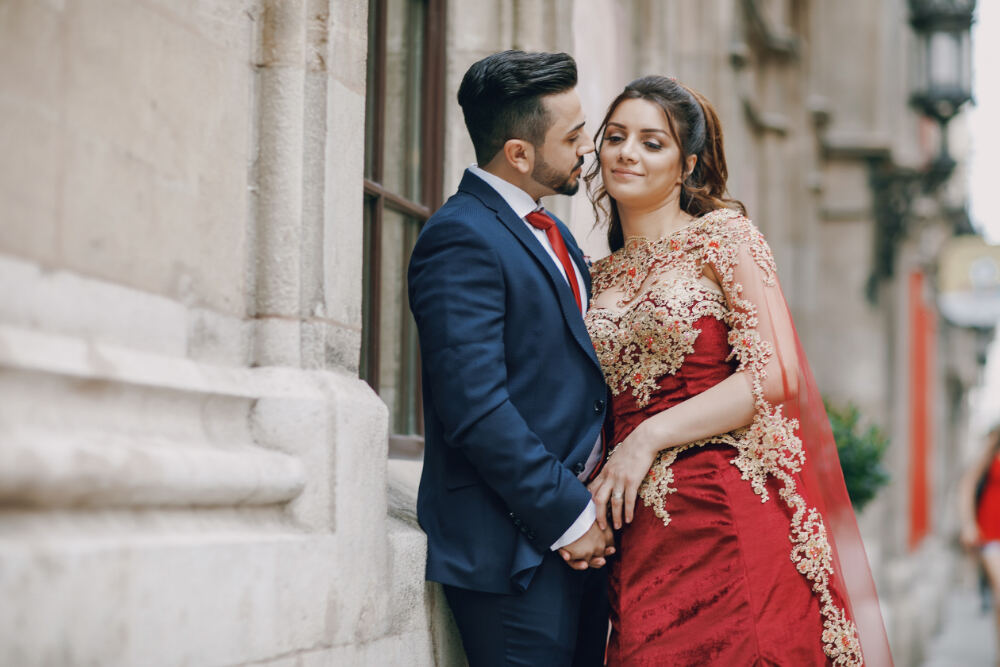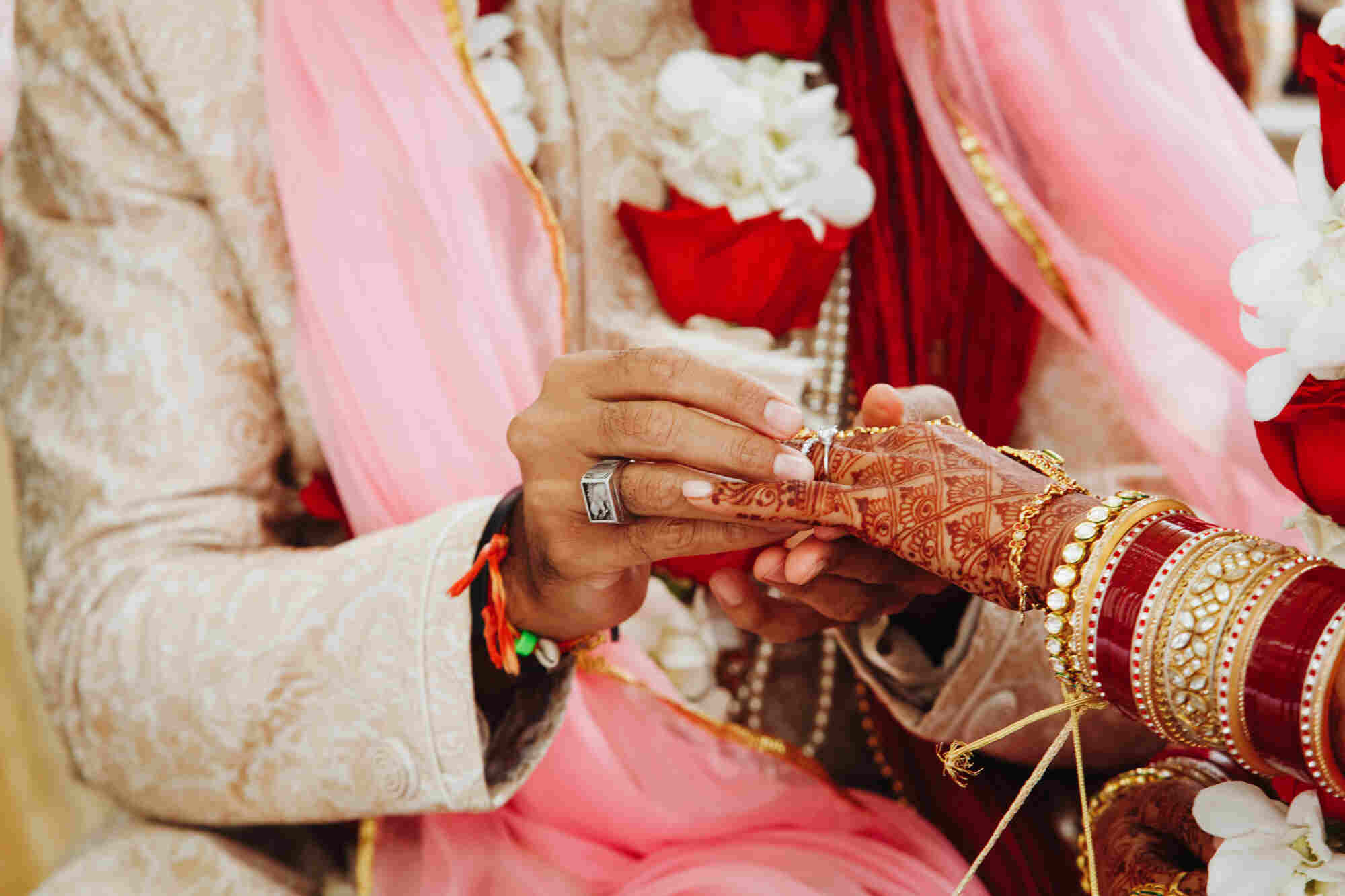
1. Kanyadaan
Kanyadaan is one of the most significant and emotional rituals in a Hindu wedding. The term ‘Kanyadaan’ translates to ‘giving away the daughter’ and is performed by the bride’s father or guardian. It symbolizes the offering of the most precious gift – their daughter – to the groom, entrusting him with her happiness and well-being.
Significance of Kanyadaan:
- It represents selflessness and unconditional love from the parents towards their daughter.
- It is believed to bring immense blessings and spiritual merit to the parents.
- It emphasizes the concept of duty and responsibility in marriage.
During this ritual, the groom pledges to take care of the bride, respecting and honoring her throughout their life together. The act of Kanyadaan is considered one of the highest forms of charity in Hinduism and is often accompanied by sacred mantras and prayers.
2. Mangal Pheras
One of the most vital and auspicious moments of a Hindu wedding is the ‘Mangal Pheras’ or the seven sacred rounds taken by the bride and groom around the holy fire (Agni). Each round represents a vow that the couple makes to one another, ensuring a strong and everlasting relationship.
The Seven Vows and Their Meaning:
Prayer for Nourishment – Seeking sustenance and well-being for the family.
Strength and Prosperity – Promising to support each other in all aspects of life.
Wealth and Happiness – Committing to financial and emotional prosperity.
Mutual Love and Respect – Pledging love, care, and understanding.
Healthy and Blessed Offspring – Seeking blessings for a healthy lineage.
Togetherness in All Phases of Life – Assuring companionship in joy and sorrow.
Eternal Love and Loyalty – Promising an unbreakable bond of love and faithfulness.
Mangal Pheras signifies the official completion of the wedding rituals, marking the couple’s transformation into husband and wife. The fire is considered a witness to the vows, making them sacred and binding.
3. Sindoor and Mangalsutra
In Hindu culture, sindoor (vermilion) and mangalsutra (sacred necklace) are two of the most important symbols of a married woman. They signify her marital status and are worn as a mark of respect, commitment, and love for her husband.
The Importance of Sindoor and Mangalsutra:
Sindoor: Applied on the parting of the bride’s hair, it represents her husband’s long life and well-being. It is also associated with the goddess Parvati, who blesses a woman with a prosperous and happy married life.
Mangalsutra: A sacred black and gold beaded necklace tied around the bride’s neck by the groom, symbolizing their eternal bond. The black beads are believed to ward off evil and protect the marriage from negative influences.
The act of applying sindoor and tying the mangalsutra signifies the groom’s promise to protect and cherish his wife throughout their life together.
4. Saptapadi
Saptapadi, or the ‘Seven Steps,’ is a crucial ritual in Hindu marriages, where the couple takes seven steps together, making promises to one another. Each step signifies a fundamental aspect of their married life, such as trust, companionship, prosperity, and mutual respect.
Significance of Saptapadi:
- It reinforces the couple’s commitment to each other for life.
- It emphasizes the importance of teamwork, trust, and harmony in marriage.
- The seven steps cover aspects like food, health, wealth, happiness, family, duty, and spiritual togetherness.
Once the couple completes the seventh step, they are officially declared husband and wife, making this ritual one of the most crucial and binding elements of a Hindu marriage.
5. Grihapravesh
Grihapravesh marks the bride’s entry into her new home after the wedding. This ritual signifies her integration into the groom’s family and is considered an auspicious beginning to her married life.
Key Aspects of Grihapravesh:
- The bride is welcomed with aarti (a ritual using a lit lamp) and showers of rice or flowers.
- She pushes a pot filled with rice at the entrance, symbolizing abundance and prosperity.
- Her first step into the house is seen as a blessing for harmony, happiness, and well-being.
This ritual not only emphasizes the bride’s acceptance into her new family but also sets the tone for mutual love, respect, and understanding between her and her in-laws.
The Blessings Matrimonials
A Hindu marriage is not just the union of two individuals; it is the sacred bond of two souls, families, and generations to come. Rooted in deep spiritual significance, Hindu weddings are marked by various rituals and traditions, each carrying a profound meaning. These customs are not merely ceremonial but play a crucial role in ensuring harmony, prosperity, and longevity in a couple’s married life. Here are the three most important traditions and rituals that contribute to a successful Hindu marriage.

Conclusion
The rituals of Kanyadaan, Mangal Pheras, and the symbols of Sindoor and Mangalsutra hold deep-rooted meanings that transcend generations. These customs lay the foundation for a successful and blissful married life, ensuring love, respect, and companionship. By understanding and honoring these traditions, couples embark on a beautiful journey filled with devotion and togetherness.
Don’t miss: Future of Matrimony: Virtual Reality Dates & Marriage Bureaus
FAQs
1. Why is Kanyadaan considered the most sacred ritual in a Hindu wedding?
Kanyadaan is considered sacred because it signifies the ultimate act of charity by the bride’s parents. It represents their selfless love and belief in their daughter’s new life with her husband.
2. How many Pheras are taken in a Hindu wedding, and what do they signify?
In most Hindu weddings, seven Pheras are taken around the sacred fire. Each round signifies a vow, including prosperity, health, mutual respect, love, and companionship.
3. What is the significance of Sindoor in a Hindu marriage?
Sindoor represents a woman’s marital status and is believed to bring prosperity and longevity to her husband. It is also a symbol of her commitment and devotion to her marriage.
4. Can a Hindu marriage be complete without a Mangal Phera?
No, Mangal Pheras are considered the most important part of the wedding ceremony. Without them, the marriage is considered incomplete in many Hindu traditions.
5. Is wearing a Mangalsutra mandatory for Hindu married women?
While the Mangalsutra is a traditional symbol of marriage, it is a personal choice in modern times. Some women continue to wear it as a sign of respect for tradition, while others may opt for alternative symbols of their marital status.